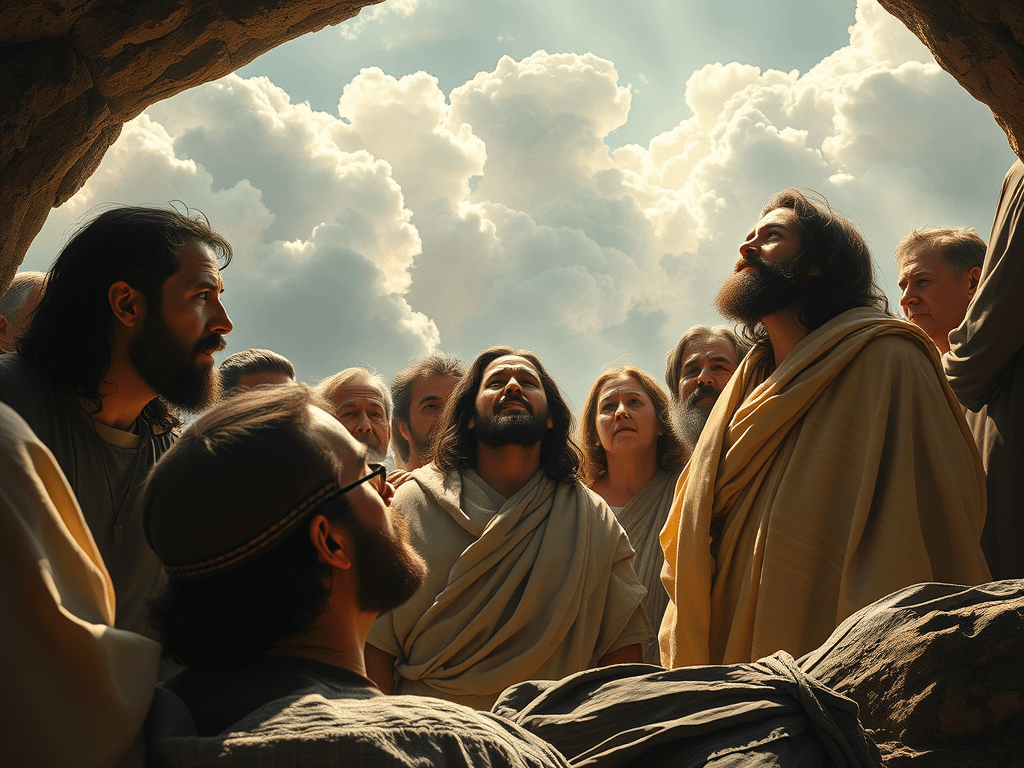Who was Lazarus in the Bible?
Who was Lazarus in the Bible? Have you ever pondered the profound impact a single story can have on religious beliefs and philosophical thought? The tale of Lazarus in the Bible is one such narrative that continues to captivate the imaginations of millions.
This biblical account, recorded in the Gospel of John, offers a poignant exploration of themes like life, death, and resurrection.
Understanding Lazarus’s story is not just an academic exercise; it sheds light on the very essence of faith and hope within Christian doctrine.
Delving into these ancient texts provides modern readers with insights into the cultural and religious milieu of the time.
In Christianity, Lazarus is a significant figure, primarily known for his miraculous resurrection from the dead, as narrated in the New Testament.
This story underscores Jesus’ power over life and death, symbolizing the promise of eternal life for believers. The Lazarus narrative brings forth theological dilemmas and interpretations that have intrigued scholars and theologians for centuries.
As we navigate through the fascinating layers of Lazarus’s story, let’s uncover the nuanced dimensions of its meaning and legacy.
The Setting and Context of Lazarus’s Story
To comprehend Lazarus’s story, we must first look at the setting in which this event unfolds. This narrative is exclusively found in the Gospel of John, chapter 11, beginning in the village of Bethany, located near Jerusalem.
Bethany was home to Lazarus and his two sisters, Martha and Mary. Their relationship with Jesus was a close and personal one, hinting at a deeper bond beyond mere association.
| Aspect | Description | Relevance |
|---|---|---|
| Village of Bethany | A small village near Jerusalem | Home of Lazarus, central to his story |
| Martha and Mary | Sisters of Lazarus | Showcase faith and emotion in the narrative |
| Timeframe | During Jesus’ ministry | Crucial for understanding the timeline |
| Location | Near Jerusalem | Significant for proximity to where events unfold |
This setting provides a backdrop that highlights Lazarus’s illness and subsequent death, establishing a scenario ripe for the display of divine power.
The anticipation builds as the story progresses, with word reaching Jesus that Lazarus is gravely ill. However, Jesus deliberately delays his journey to Bethany, stating that this sickness will not end in death but is for the glory of God.
The narrative’s unfolding at Bethany gives it a uniquely intimate and domestic feel, bringing the divine into the sphere of everyday life.
The Miracle of Resurrection
Lazarus’s narrative is pivotal because it leads to one of Jesus’ most extraordinary miracles: the raising of a man from the dead after four days in the tomb.
This act holds immense significance as it reinforces Jesus’ identity and mission. Upon Jesus’s arrival in Bethany, he encounters Martha and Mary in deep despair, who express their sorrow and firmly articulate their faith, believing Jesus could have prevented Lazarus’s death.
The climax of the story occurs when Jesus, deeply moved, goes to Lazarus’s tomb. In a dramatic moment, Jesus calls out, “Lazarus, come forth,” and Lazarus emerges from the grave, still bound in his burial cloths.
This miraculous event is not just a testimony to Jesus’ divine authority but also a symbol of hope and a sign of the future resurrection for all believers. It illustrates a profound truth about life beyond physical death.
“I am the resurrection and the life. He who believes in me will live, even though he dies” – John 11:25
This assertion by Jesus underscores the theological essence of the Lazarus story, emphasizing themes of belief, life, and resurrection.
The miracle demonstrates a tangible manifestation of God’s power and sets the stage for subsequent events in the Gospel leading to Jesus’s own death and resurrection.
Theological Implications of the Lazarus Story
What does the story of Lazarus signify for contemporary believers and theologians? Its resonance goes far beyond the miracle itself, touching upon deeper theological questions and interpretations.
The raising of Lazarus exemplifies the concept of resurrection and eternal life, which are central to Christian eschatology.
It functions as a foretaste of Jesus’ resurrection, highlighting the triumph over death and the promise of new life.
Moreover, the narrative challenges believers to reflect on their faith in the face of suffering and mortality. It emphasizes the necessity of belief in Jesus as the cornerstone of Christian faith, suggesting a paradigm where trust in divine providence takes precedence over despair.
The account of Lazarus raises enduring questions about the nature of faith and the human condition, encouraging believers to embrace hope amidst adversity.

The Disciples’ Role and Reaction
The story of Lazarus also offers a glimpse into how Jesus’s followers perceived his actions. Before traveling to Bethany, Jesus converses with his disciples, revealing their uncertainty and apprehension. They are aware of the hostility surrounding Jesus’s ministry and express concern for his safety.
- The disciples’ initial reluctance to return to Judea highlights their protective instincts and fear.
- Thomas, known as ‘Doubting Thomas’, boldly states, “Let us also go, that we may die with him,” showcasing a mix of courage and resignation.
- Their varied reactions provide a mirror for real human emotions and doubts in the face of divine events.
- This interaction enriches the narrative, offering a more comprehensive understanding of the disciples’ journey toward faith.
This section illuminates the complexities of following Christ, where fear and hope intertwine. Their journey with Jesus towards Bethany becomes an allegory for embracing divine purpose, even amidst looming uncertainties.
The Sisters: Martha and Mary’s Faith
Throughout this narrative, Martha and Mary emerge as pivotal figures whose interactions with Jesus reveal a deep and personal faith.
Their encounters with Jesus underscore a profound belief in his power while also expressing an authentic human grief.
Their declaration of faith, paired with a visible manifestation of human sorrow, reinforces the idea that theological belief is intertwined with human experience.
Martha is the first to confront Jesus, displaying a mixture of faith and sorrow. Her statement, “Lord, if you had been here, my brother would not have died,” reflects both a belief in Jesus’ power and a lament for her brother’s demise.
Mary’s quiet, personal encounter with Jesus further accentuates the intensity of the moment. Their belief, even in the face of seemingly insurmountable grief, highlights their unwavering trust in Jesus.
Conclusion
The story of Lazarus in the Bible is a timeless narrative that continues to resonate with profound theological and philosophical implications.
Its significance transcends the mere act of a miracle, providing enduring reflections on life, death, and the transformative power of faith.
Lazarus’s story encapsulates the essence of Christian belief in resurrection and the eternal promise of life, inviting believers to ponder their own understanding of faith in times of despair.
As this narrative unfolds within the intimate setting of Bethany, it remains a poignant reminder of the power of divine love and the ultimate triumph over the grave.
Whether seen as a literal miracle or a symbolic tale, the story of Lazarus offers enduring lessons in hope, belief, and the transformative potential of divine grace.
FAQ – Dúvidas Comuns
What is the significance of Lazarus’s resurrection in Christianity?
The resurrection of Lazarus symbolizes Jesus’ divine power over life and death, serving as a precursor to his own resurrection and the promise of eternal life for believers.
Who were Lazarus’s sisters and what role did they play?
Martha and Mary were Lazarus’s sisters. They played critical roles in the narrative by demonstrating firm faith in Jesus and illustrating the human aspect of grief and hope.
Why did Jesus wait before going to Lazarus?
Jesus delayed his journey to Bethany to ensure that the miracle of resurrection served as a profound demonstration of God’s glory, enhancing the faith of witnesses.
Where does the story of Lazarus appear in the Bible?
The story is recorded in the Gospel of John, Chapter 11 in the New Testament, offering a unique lens on Jesus’ ministry.
How does the Lazarus story connect to Jesus’s resurrection?
Lazarus’s resurrection acts as a symbolic foreshadowing of Jesus’s own resurrection, underscoring the theme of victory over death and eternal life.







